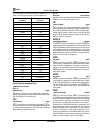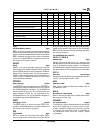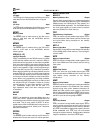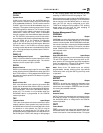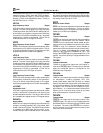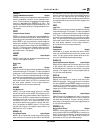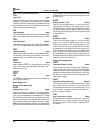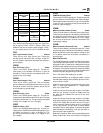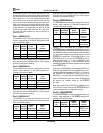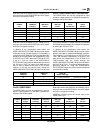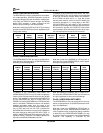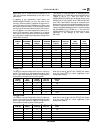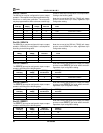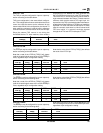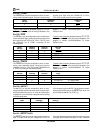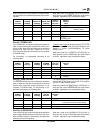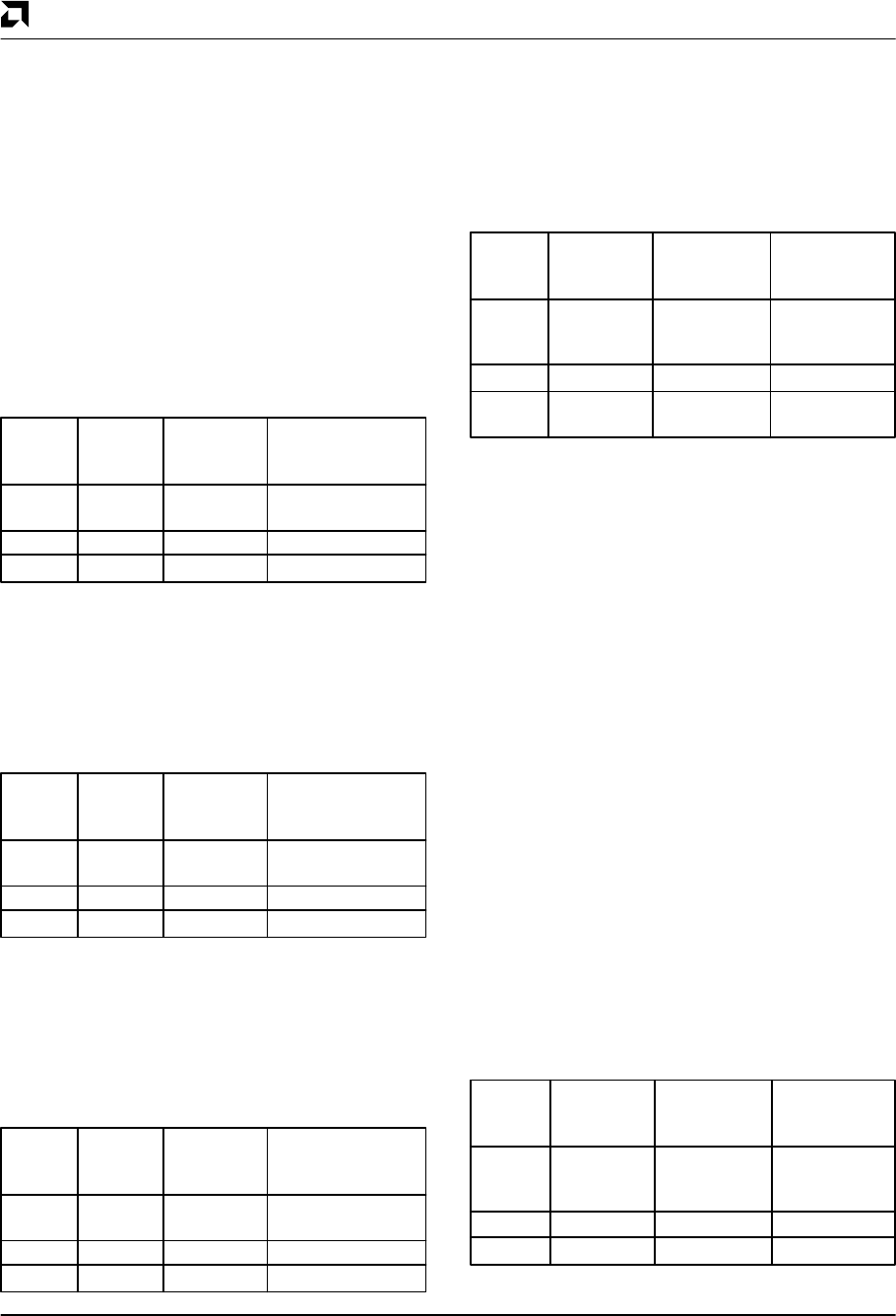
AMD
P R E L I M I N A R Y
34
Am79C930
for an output function. This means that there are con-
figurations for which a read of the pin data register bit will
not reflect what has most recently been written to the pin
data register bit ( i.e., if a pin is configured as an output
with its data source as some internal circuit, then the
user may write the pin data bit with a given value, and a
read of this same bit will yield the output function value,
which may not necessarily match the value just written
to the data bit). This functionality is given as a note
following each table. Also note that for a few pins,
the read and write locations for the pin data are in
different places.
Pin 1: USER2/LA19
The USER2/LA19 pin may be configured for input op-
eration, output operation, or ISA LA19 operation accord-
ing to the following table:
USER2/ USER2/
PCMCIA USER2EN LA19 LA19
Pin TCR14[2] Pin Direction Pin Data
0X I NA
(LA19 input function)
10 I NA
1 1 O TIR29[2]
Note that a read of the USERDT[2] bit (TIR29[2]) will al-
ways give the current USER2/LA19 pin value, regard-
less of pin configuration setting.
Pin 2: USER3/SA16
The USER3/SA16 pin may be configured for input op-
eration, output operation, or ISA SA16 operation ac-
cording to the following table:
USER3/ USER3/
PCMCIA USER3EN SA16 SA16
Pin TCR14[3] Pin Direction Pin Data
0X I NA
(SA16 input function)
10 I NA
1 1 O TIR29[3]
Note that a read of the USERDT[3] bit (TIR29[3]) will al-
ways give the current USER3/SA16 pin value, regard-
less of pin configuration setting.
Pin 3: USER4/LA17
The USER4/LA17 pin may be configured for input op-
eration, output operation, or ISA LA17 operation accord-
ing to the following table:
USER4/ USER4/
PCMCIA USER4EN LA17 LA17
Pin TCR14[4] Pin Direction Pin Data
0X I NA
(LA17 input function)
10 I NA
1 1 O TIR29[4]
Note that a read of the USERDT[4] bit (TIR29[4]) will al-
ways give the current USER4/LA17 pin value, regard-
less of pin configuration setting.
Pin 45: STSCHG/BALE
The STSCHG/BALE pin may be configured for input op-
eration, output operation, or ISA BALE operation ac-
cording to the following table:
STSCHG/ STSCHG/
PCMCIA STSCHGFN BALE BALE
Pin TCR15[0] Pin Direction Pin Data
0X I NA
(BALE input
function)
1 0 O MIR9[0]
1 1 O MIR9[0]
OR CCSR[4]
MIR9[0] is the STSCHGD bit. In PCMCIA mode,
STSCHGD basically acts like a UNMASKING function
for the STSCHG pin. STSCHGD can be used to prevent
the WAKEUP signal from the PCMCIA Card Configura-
tion and Status Register from being signaled on the
STSCHG pin. Note that if STSCHGFN is set to 1 and
STSCHGD is set to a 0, then the STSCHG pin will al-
ways be deasserted (i.e., it will be MASKED). With
STSCHGFN=1, writing a 1 to the STSCHGD bit will
UNMASK the WAKEUP status and allow it to be applied
to the STSCHG pin.
Note that the STSCHGD bit is automatically RESET to 0
whenever the WAKEUP bit of the PCMCIA Card Con-
figuration and Status Register is RESET to 0. Therefore,
the UNMASK bit (STSCHGD) needs to be set to
UNMASK (=1) for each new use of the WAKEUP signal.
When STSCHGFN is set to 0, then the STSCHGD bit
will become an inverted source for the STSCHG
pin value.
Note that a read of the STSCHGD bit (MIR9[0]) will al-
ways give the inverse of the current STSCHG/BALE pin
value, regardless of pin configuration setting.
Pin 90: USER0/RFRSH
The USER0/RFRSH pin may be configured for input op-
eration, output operation, or ISA RFRSH operation ac-
cording to the following table:
USER0/ USER0/
PCMCIA USER0EN RFRSH RFRSH
Pin TCR14[0] Pin Direction Pin Data
0X I NA
(RFRSH input
function)
10 I NA
1 1 O TIR29[0]



